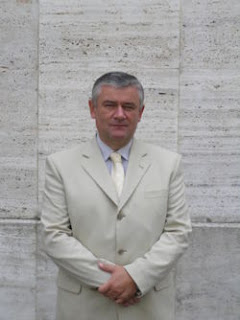 Taking advantage of the opportunity to go back to Spain after last weeks wonderful trip to Barcelona I first traveled to Seville. I did not see the barber.
Taking advantage of the opportunity to go back to Spain after last weeks wonderful trip to Barcelona I first traveled to Seville. I did not see the barber.Seville is the artistic, cultural, and financial capital of southern Spain, irrigated by the river Guadalquivir. It is the capital of Andalusia and of the province of Sevilla. I was surprised to discover that the population of the city of Seville proper was roughly 704,154 the population of the urban area was over a million, ranking the city as the fourth-largest metropolitan area of Spain. With this said, you do not feel that you are in such a large city. Known as Hispalis under the Moors. The architecture of the older parts of the city still reflects the centuries of Moorish control of the city, beginning in 711. The city sits well inland, but a mere 6 meters above sea level. Seville was long an important sea port, prior to the silting up of the Guadalquivir. It was from Seville that Ferdinand Magellan obtained the ships for his circumnavigation. Much of the Spanish Empire’s silver from the New World came to Europe in the Spanish treasure fleet that landed in Seville. To those fellow history lover readers out there, Seville holds the most important archive of the Spanish administration in the Americas: the Archivo General de Indias. Also, the American silver had been rapidly transhipped to Antwerp or Genoa, seat of the bankers who had advanced steady funds to the Spanish Crown from Seville. To those chocolate lovers, the first commercial shipment of chocolate from Veracruz arrived in Seville in 1585. The city was the biggest of Spain in 16th and 17th centuries, with a population of 130,000 in 1649, the year of the Great Plague of Seville. This was the beginning of the city's fall from importance, but Seville was an important artistic centre of the baroque. A stronghold of the liberals during the First Spanish Civil War, 1820-1823, due to its proximity to Africa, during the Second Spanish Civil War, 1936-1939, Seville fell to the insurgent army led by Francisco Franco.
I was able to see the city's cathedral which was built on the former site of the city's mosque. It is the largest of all medieval and Gothic cathedrals, in terms of both area and volume. The interior, with the longest nave in Spain, is lavishly decorated, with a large quantity of gold eident. Interestingly enough, the Cathedral reused some columns and elements from the mosque, and most famously the Giralda, originally a minaret, was converted into a bell tower. On the top of the cathedral is a statue, known locally as La Giraldilla, representing Faith and is the city's most famous symbol. I loved Seville and wished I could have stayed but it was one to Malaga.
Málaga is a port city in Andalusia, southern Spain, on the Costa del Sol coast of the Mediterranean. It is beautiful if a bit too tourist. The climate is mild and equable, the mean annual temperature being about 19 °C (66 °F). It has been compared to Naples for its broad sky and broad expanse of bay. The beaches where very nice and I received a nice tan.
The inner city of Málaga is just behind the harbour. And I walked the quarters of El Perchel, La Trinidad and Lagunillas. The Holy Week, Semana Santa, one of two well-known of Málaga's festivals took place while I visisted and I have attached a corresponding picture.




 equently criticized for his arrogance and nationalism. In his defence, Slota says he is protecting Slovaks, especially those living in southern Slovakia. However when he has repeatedly made and makes xenophobic, nationalist, abusing statements about the Party of the Hungarian Coalition (the party of the Hungarian minority in Slovakia), and Hungarians in general and strongly abuses in his speeches the Roma (Romanians) and homosexuals, it is difficult to discover how he is protecting Slovaks. His most recent comments regarding Albanians had his coalition parter and former prime minister, Vladimír Mečiar cringe.
equently criticized for his arrogance and nationalism. In his defence, Slota says he is protecting Slovaks, especially those living in southern Slovakia. However when he has repeatedly made and makes xenophobic, nationalist, abusing statements about the Party of the Hungarian Coalition (the party of the Hungarian minority in Slovakia), and Hungarians in general and strongly abuses in his speeches the Roma (Romanians) and homosexuals, it is difficult to discover how he is protecting Slovaks. His most recent comments regarding Albanians had his coalition parter and former prime minister, Vladimír Mečiar cringe.